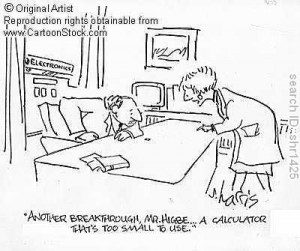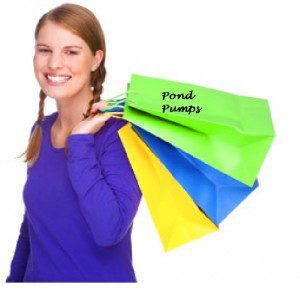Need a new pond Pump?
Goodness gracious, have you LOOKED at our selection of pond pumps lately. We have such a vast selection, it could get overwhelming if you don’t know what exactly you’re looking for.
There are several things to come into concideration while you are selecting a pond pump, and not all of it is as simple as price tag. Costs may seem like the most important thing in the beginning, but you really have to look at the bigger picture and life of the pump. Although you’ll save $40 in start up costs, if may be nullified in the first month with operating costs. Also, you might want to look into the ease of repairs, some pumps are suitable to replace internal parts, whereas other need to just be replaced.
Choosing a Pump
All ponds need a pump to circulate water for aeration, to run filters, and achieve a relaxing sound.
It is one factor, since the pump should circulate the volume of the pond at least every hour or two, but there are several other important considerations, as well.
1. What is the pump going to do? Will it run a small fountain, a waterfall, or both?
2. How high is the waterfall? The vertical height of the highest point of the waterfall above the water level of the pond is called the “static head height”
3. How wide is the waterfall? To create a nice “average” looking waterfall over a flat stone requires at least 1000 gallons of water flow every hour (gph) for every 12 inches of waterfall width (1500 gph per 12” wide is preferred).
4. How far will the pump be from the waterfall? Determine the length of tubing needed to connect the pump to the waterfall.
(Every 10 feet of tubing adds about 1 foot of head-height!) Using flexible tubing saves time and reduces the need for extra fittings, which can add to the head height. Remember, the pump should be placed on the opposite end of the pond, away from the waterfall for ideal circulation.
WARNING: You might want to grab a calculator!
Example: A pond is 14’x6’x2’ (approx. 700 gallons) and will have a waterfall 24 inches in total height above the water level in the pond. It will drop 12 inches into a short stream and then drop another 12 inches into the pond. The pump will be placed on the opposite side of the pond from the waterfall and will require 20 feet of tubing to connect the pump to the head of the waterfall. The waterfall will have a “sheet” of water about 18 inches wide (1.5 ft.).
We must first determine the total head height:
We have a 2 foot head for the waterfall plus 2 additional feet of head for the 20 feet of tubing. Additional fittings such as elbows, etc. can add some head height, also. We will add 1 foot for fittings. Our total head height is about 5 feet.
Second, we must determine the gallons per hour (gph) required to make our waterfall look effective:
At 18 inches wide, we would need at least 1500gph at the top of the waterfall. 1½ feet x 1000gph= 1500. (1500gph x 1.5 ‘ wide = 2250 gph would be even better!)
Third, we select a pump that will deliver 1500 to 2250gph (at 5 feet of total head). This also easily meets the required minimum flow for circulating the pond volume every hour- 700 gallons. It is OK to circulate the entire pond volume several times per hour.
Note: most pumps are rated for flow rates at 0 feet or 1 foot of head, so some deeper investigation into the pumps’ “performance charts” will be needed.
Also consider the energy efficiency of the pump. Some pumps are “high-head” pumps, able to pump over 20 feet high, but they use lots of electricity! “Low-head” pumps are much more efficient and longer lasting, but are not as effective at heads of more than 8 to 10 feet.
Low head pumps will save you money in the long run!
A good pump for the pond in the above example would be the Pondmaster Hy-Drive 3200. This is a low head pump that is extremely energy efficient and delivers a maximum flow of 3200 gph, but at 5 feet of head performs at about 2050 gph. This pump also has a 2 year warranty.
 Pumps are the “heart” of a well designed water garden or Koi pond. All ponds require circulating water for aeration, filtration, and, of coarse, beautiful sound and beauty.
Pumps are the “heart” of a well designed water garden or Koi pond. All ponds require circulating water for aeration, filtration, and, of coarse, beautiful sound and beauty.
Although the engineering of pumps specifically made for the pond industry has greatly improved in recent years, there is still a lot of confusion about how pumps work and misinformation about choosing the right pump for the myriads of different types and styles of ponds.
First some pump basics
Submersible vs. External Pumps
Submersible pumps have always been the most common pump of choice for most ponds, especially smaller ponds. Larger ponds with very high flow rate demands would often use external pumps. Koi enthusiasts have preferred external pumps over submersible pumps for fear of dangerous “oil leaks” and their poor energy efficiency. However, new technology has eliminated these concerns for most pond situations. Almost all new submersible pumps are “oil-free” now and some brands have developed pumps with medium to high flows, yet very good energy efficiency! External pumps are still preferred for very high flow rates.
External pumps are more complicated to install and difficult to hide and protect. The best and safest application for external pumps is when the pump can be installed below pond water level (externally) for a “flooded-suction” intake. This will prevent an air lock, or loss of prime, that could keeps the pump from functioning and kill all your fish in hot weather due to poor aeration. South Pleasantburg Nursery can provide external pump installation details on request.
Submersible pumps are best for most pond owners. They are very easy to install, safe, and provide almost any flow, at any height needed. They also are fairly energy efficient.
Pre-Filters vs. “Solids Handling”
All pumps need to be “pre-filtered” to some degree to prevent clogging. Some smaller pumps are attached to large pond filters which also act as a prefilter. Almost all pumps come with a small screen or sponge pre-filter. These usually are not acceptable and should not be used. Skimmers are always the best pre-filters (and best pond mechanical filter). Pump “socks” are a good alternative, if a skimmer can not be used. Some pumps are now being manufactured with a sizable “pump cage” built right on the pump. These work well in most cases. Some pumps are “solids-handling” that are able to pass large solids without clogging.
Pipes for Pumps- “Size Does Matter!”
It is important to use the proper size pipe to achieve the optimum flow from your pump. Undersized tubing will create more “head pressure” that can restrict the flow from your pump. Also, numerous fittings, such as elbows, check valves, etc. can have this effect. Flexible tubing generally reduces the need for excessive fittings, and easier to work with. Restricting the flow coming out of a pump will not hurt the pump, just the performance. However, the intake of a pump should never be restricted.
Its really not too complicated! If this seems overwhelming to you, stop in and get the grand tour of our pump selection. We’ll be your personal shopper and hold your hand through the pump purchasing process (alright, we won’t really hold your hand, but your happiness is ensured!).






